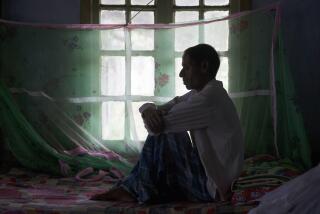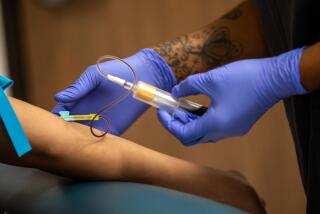Sizing Up the True AIDS Problem : Is Los Angeles County aggressive enough in testing for HIV infection?
- Share via
No performance standards are required for local governments to qualify for the money that the federal Centers for Disease Control and Prevention gives out for counseling and testing for the virus suspected of causing AIDS. Maybe that’s a good thing: Los Angeles County does not figure to lose its share of this vital funding, despite some criticism that the county program too often appears to lumber along.
New York City, for example, received $4.9 million in CDC monies as compared with L.A. County’s $4.5 million. But New York officials conducted 46,564 tests for the human immunodeficiency virus (or HIV) in 1992. Los Angeles officials managed just 25,779 tests that year. And even though New York officials tested only about twice as many people as were tested in Los Angeles, they discovered nearly nine times as many people who had the virus. In part, this enormous gap can be attributed to differences in concentrations of serio-positivity between the two cities (studies have shown higher HIV infection rates in New York, particularly among its intravenous drug users). But only in part.
For example, how to explain the experience of Houston, a city which geographically is perhaps much like Los Angeles. There, officials performed 25% more tests than L.A. and identified three times as many cases of infection, with much less CDC money. Closer to home, for the first eight months of last year, the city of Long Beach conducted more tests than all of Los Angeles County.
County officials had several explanations for the lower numbers. For example, the chief of the county program on sexually transmitted diseases noted that the Los Angeles testing numbers were generated from a group of people who were not likely, as they are in New York, to walk in off the street and take an AIDS test. He was referring to folks who go to public, community-based clinics for medical care.
The problem here, however, is that Los Angeles has been struck hard. In fact, it has the second-highest number of HIV and AIDS cases in the nation. That leads the president of AIDS Healthcare Foundation to refer to the county testing program as a “tragedy” for failing to make sure that rates of infection are not higher.
County officials need to re-examine their use of CDC funds, and to question whether they should spend more time targeting high-risk groups, such as intravenous drug abusers. People who learn that they are infected are people who have the knowledge and the power to save lives. Is the county doing its best to provide that knowledge? At best, that is an open question at this point.






